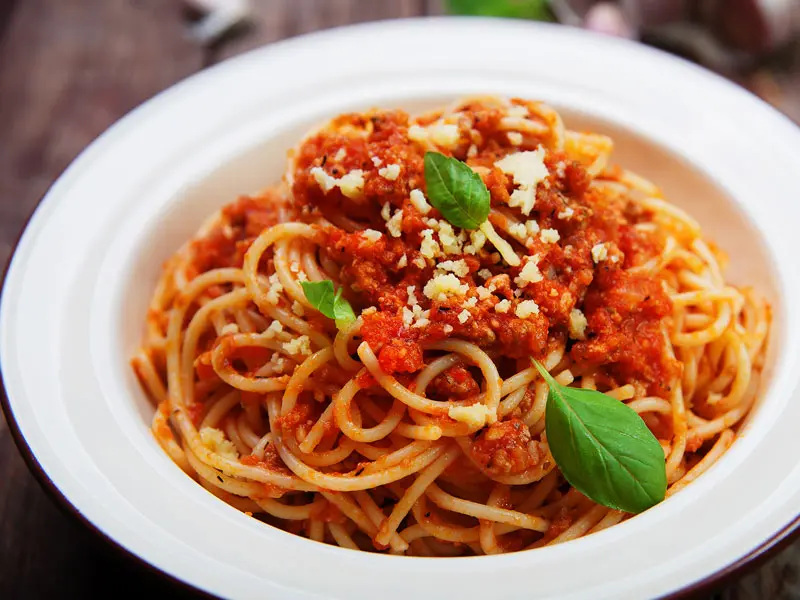vacationhavenhome.com – Spaghetti, one of the most beloved and recognizable dishes in the world, holds a central place in Italian cuisine. With its long, thin strands and versatility, spaghetti has become a symbol of Italy’s rich culinary heritage, delighting diners across continents for centuries.
The Origins of Spaghetti
While pasta itself has ancient roots, believed to date back to the Etruscans and possibly even ancient China, spaghetti as we know it today is distinctly Italian. Its name derives from the Italian word “spago,” meaning “string” or “twine,” a fitting description for its slender shape. The dish’s rise to prominence is closely tied to Southern Italy, particularly Naples, where durum wheat—ideal for making firm, long-lasting pasta—flourished.
By the 19th century, spaghetti had become a staple in Italian households. It was often paired with simple, locally available ingredients like olive oil, garlic, and cheese. The introduction of tomatoes from the Americas in the 16th century revolutionized Italian cooking, and by the 1800s, tomato-based sauces became a quintessential accompaniment to spaghetti.
Traditional Preparation Methods
Authentic Italian spaghetti is crafted with just two essential ingredients: semolina flour and water. This simplicity underscores the importance of quality, with artisanal pasta makers often emphasizing traditional techniques like bronze-die extrusion to create a slightly rough texture that holds sauce beautifully.
Cooking spaghetti “al dente” (“to the tooth”) is a hallmark of Italian culinary tradition. This technique ensures that the pasta retains a firm texture, enhancing the overall dining experience. The final dish is often finished with fresh ingredients, reflecting the Italian philosophy of letting the natural flavors shine.
Classic Spaghetti Dishes
Italian cuisine boasts a variety of iconic spaghetti-based recipes, each reflecting regional influences and local ingredients:
- Spaghetti al Pomodoro:
- A simple yet flavorful dish featuring fresh tomatoes, basil, olive oil, and garlic.
- Spaghetti alla Carbonara:
- A Roman classic made with eggs, pecorino cheese, guanciale (cured pork cheek), and black pepper.
- Spaghetti alle Vongole:
- A coastal favorite combining spaghetti with clams, garlic, white wine, and parsley.
- Spaghetti Bolognese:
- Known as “spaghetti al ragù” in Italy, this dish features a hearty meat sauce, although traditional Bolognese sauce is often served with tagliatelle instead.
Cultural Significance
Spaghetti is more than just a dish; it’s a cultural emblem of Italy. It represents the country’s emphasis on family meals, shared experiences, and the joy of savoring good food. Italian immigrants brought spaghetti to the Americas and other parts of the world in the late 19th and early 20th centuries, helping to popularize Italian cuisine globally.
Movies, literature, and art have further cemented spaghetti’s iconic status. From scenes of romantic pasta-sharing in Lady and the Tramp to its ubiquitous presence in Italian restaurants worldwide, spaghetti remains a culinary ambassador for Italy.
Modern Interpretations and Global Influence
While traditional recipes remain cherished, contemporary chefs and home cooks continue to innovate with spaghetti. Fusion dishes blend Italian techniques with international flavors, such as spaghetti with Asian-inspired sauces or plant-based alternatives for health-conscious diners.
Around the world, spaghetti has adapted to local tastes. In the Philippines, for example, it’s served with a sweet tomato sauce and hot dogs, while in America, spaghetti and meatballs is a beloved comfort food—an invention with Italian-American roots.
Conclusion
Spaghetti embodies the essence of Italian cuisine: simple, adaptable, and full of flavor. Its enduring appeal lies in its ability to bring people together, whether over a humble plate of spaghetti al pomodoro or an elaborate feast. As a timeless culinary icon, spaghetti continues to inspire and delight, celebrating the spirit of Italy in every strand.




